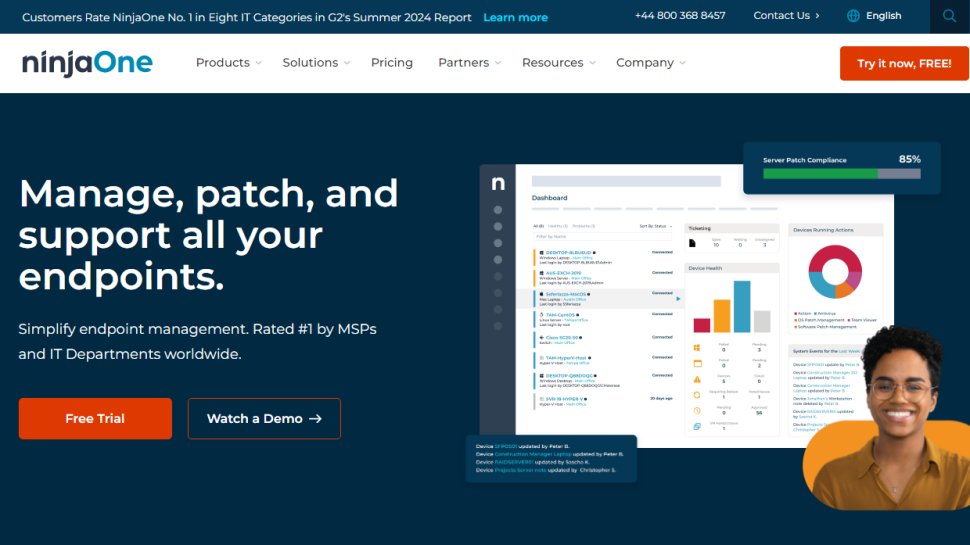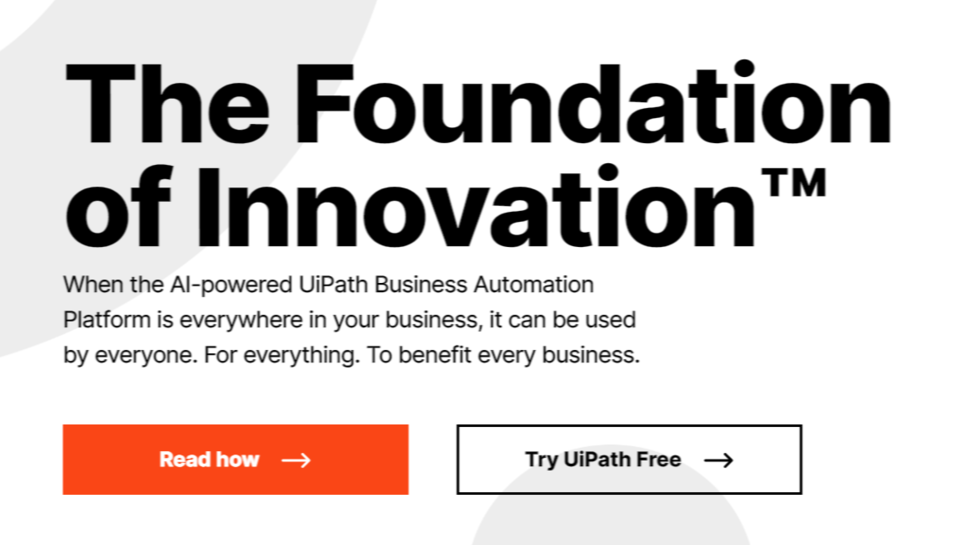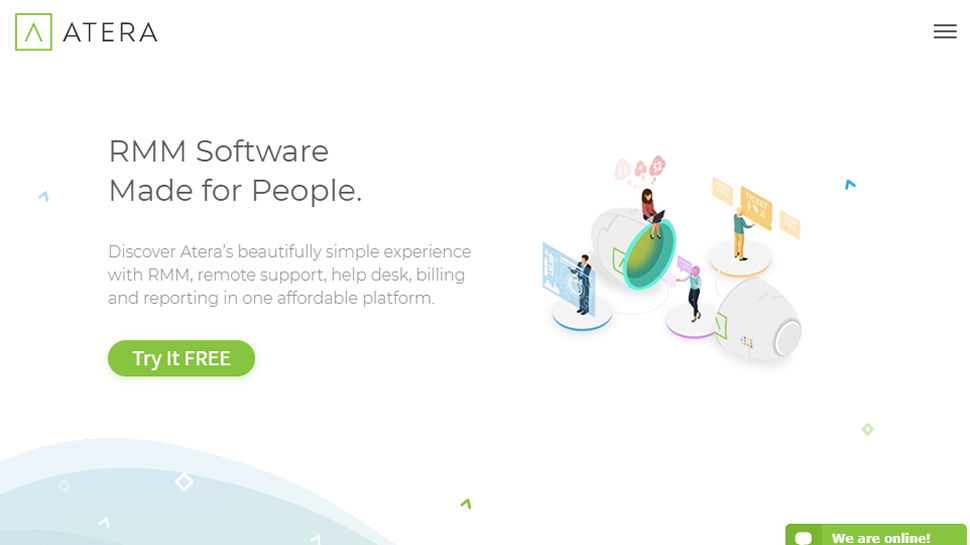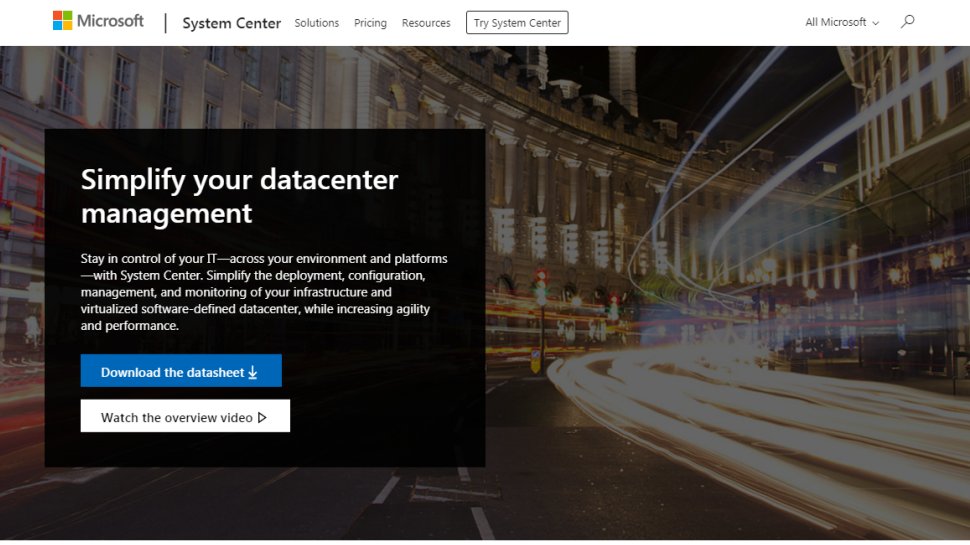Best IT Automation software of 2025
Automate systems that handle repeatable and mundane technical issues

We list the best IT Automation software, to make it simple and easy to set up and manage a single platform to automate systems that handle repeatable and mundane technical issues.
IT operations involve a lot of work and effort. It starts from mundane tasks like setting up computers and keeping their operating systems updated to complex ones like managing devices remotely and configuring the internal network according to custom specifications. The tasks can be too overwhelming for staff, which is why many companies now employ IT automation tools to make things easier.
IT automation deals with systems that handle repeatable and mundane technical tasks. Automation platforms perform the simple work that humans would have otherwise spent much time doing over and over again.
There are a lot of IT automation systems out there, with each having different specialties. It can be challenging to pick the best ones, but that’s why we’re here. We tested different IT automation platforms to identify the best ones. We narrowed our list based on important factors including pricing, ease of use, customer support, features, etc. After reading this review, it should be easy to make a good choice.
Reader offer: Get a 14-day free trial on NinjaOne
NinjaOne is a cloud-based IT management platform designed for IT professionals. It offers features like remote monitoring, patch management, asset tracking, and automated remediation, enabling efficient device management across various environments. With capabilities such as secure remote access, real-time alerts, and mobile device management, NinjaOne streamlines IT operations.
We've also featured the Best IT asset management tools.
The best IT Automation software of 2025 in full:
Why you can trust TechRadar
Best IT Automation software for endpoint management

1. NinjaOne
Our expert review:
Reasons to buy
Reasons to avoid
NinjaOne is a popular remote monitoring and IT management platform. It’s very good for automating endpoint management, which refers to managing and supervising devices connected to a network.
This platform lets you write automation scripts to handle a lot of behind-the-scenes IT tasks. For example, you can write scripts to automatically back up files at specific times for each connected computer or a script to automatically update antivirus software when required. If you’re not good at programming, you can use the drag-and-drop interface to create automations.
NinjaOne's scripting engine works in various programming languages, including Javascript, ShellScript, Powershell, etc., and you can automate almost anything on a macOS or Windows operating system. You can control what devices to deploy the automation on. For instance, you can run automation for individual devices or for entire organizations and dynamic groups.
NinjaOne is more than just endpoint management software. It offers broad IT service management features for enterprises. The drawback is that there’s a steep learning curve if you want to utilize most of the platform’s features.
Read our full NinjaOne review.
Best IT Automation software for IT service management (ITSM)

Reasons to buy
Reasons to avoid
SysAid is a platform designed to automate IT service management tasks. It utilizes artificial intelligence and machine learning techniques to help enterprises automate their IT tasks and free up time they can use elsewhere.
For instance, SysAid offers ticket automation; it can automatically prioritize your IT tickets and send them to the right personnel that'll take care of the problem. It prioritizes tickets according to your pre-programmed instructions and what the AI system learns from studying your usage.
You can also automate repetitive IT tasks, e.g., resetting printers, granting access to software, and transferring files. You can use this platform to automatically onboard new employees and get them familiar with your IT setup. You’ll get a full audit trail of the automated actions that you can review for compliance and security purposes.
SysAid doesn’t have standard pricing. Your bill depends on the features you want and your custom IT infrastructure, so you’ll have to contact the company’s sales team for a quote. There’s no free plan but there’s a free trial period to test the features before making your final purchase decision.
Read our full SysAid review.
Best IT Automation software for robotic process

3. UiPath
Reasons to buy
Reasons to avoid
UiPath is the world’s most popular robotic process automation (RPA) tool, enabling enterprises to automate many IT tasks and free up time and effort to put them to use elsewhere.
UiPath offers broad automation features. You can build and deploy different types of robots. The platform even comes with ready-made robots designed for various use cases, e.g., healthcare, finance, manufacturing, etc. A good example is using robots to process invoices and vendor payments and generate accounting reports.
A good thing about UiPath is that you don’t need deep coding experience to create robots on the platform. It offers a drag-and-drop interface to create robots by simply moving modules from one place to another. Your coding expertise still helps to create advanced robots, but it’s not necessary, unlike with many rival RPA platforms.
UiPath offers excellent customer support. You can contact a human support representative whenever you want and you also have access to a large collection of user guides, manuals, and video tutorials concerning all aspects of the platform. The drawback is that UiPath is pretty expensive, starting at $420 monthly.
Best IT Automation software for large businesses

Reasons to buy
Reasons to avoid
Atera is a remote monitoring and management software. It enables IT teams to stay on top of their technical infrastructure and ensure that things are always in good shape.
This platform incorporates artificial intelligence to help IT personnel automate a lot of tasks. The AI system can analyze common ticket requests and craft intelligent responses (though not always accurate). This feature helps you cut down on your ticket response and management time. AI can answer simple inquiries while your IT staff focuses on the more complex ones. The AI system can even tag and prioritize tickets for the IT staff to handle.
You can generate automation scripts using Atera's AI system. The platform comes with over 1,000 ready-made scripts but you can generate additional ones. Atera gives you deep visibility into all devices connected to your network, and you can automate software updates and patches.
This tool is very user-friendly, with an intuitive interface that’s easy to understand and navigate. It also has mobile apps, which makes it convenient to use on the go.
Read our full Atera review.
Best IT Automation software for Azure users

5. Microsoft System Center
Reasons to buy
Reasons to avoid
Cloud computing is a major part of IT operations nowadays. Many enterprises are migrating from on-premise IT infrastructure to the cloud, and Microsoft Azure is one of the main cloud computing providers they choose.
Microsoft's System Center makes it easy to control and manage your IT infrastructure. You can manage all your Azure infrastructure from one place and automate a lot of tasks. For example, you can automatically monitor and troubleshoot your servers at specific periods to detect any issues before they morph into something more serious. You can allocate virtual machines depending on demand instead of renting unnecessary server space with hopes of future demand.
Microsoft doesn’t offer a free plan for System Center, which is a disadvantage. Pricing can also run up to thousands of dollars annually, which makes it suitable for large organizations with significant IT budgets.
A good thing about System Center is that it also enables you to manage on-premise IT infrastructure (servers and PCs) and not just cloud-based ones only.
Best IT automation tool FAQs
How to choose an IT automation platform
Cost
Cost is the first thing to consider when choosing any software. You need to choose something that you can afford in the long term. Pricing for automation tools usually depends on the number of tasks and how big your IT infrastructure is, so it should be easy to estimate how much you’ll pay beforehand. Always read the fine print to see if there are any hidden costs and check if there’s a free trial to test the features before making your final decision.
Ease of use
Your automation platform should be easy to use and navigate. It should have an intuitive interface that a layman can understand. Complex interfaces can frustrate users and cause costly mistakes.
Customer support
Things can go wrong at any time, and you’ll need external help to solve your issues. Ensure you choose an IT automation platform with a solid reputation regarding customer service; check user reviews to confirm this. You should be able to contact a human support representative via email, telephone, or live chat when you need one. You should also have access to additional support resources such as user guides and video tutorials.
Essential features of an IT automation tool
1. Robotic Process Automation (RPA)
Robotic process automation (RPA) entails building and deploying software robots to handle repetitive tasks. For example, you can build bots to scrape websites and extract contact information or create bots to process employee payroll based on the number of hours worked.
Your IT automation platform should let you build RPA bots, preferably with a drag-and-drop interface.
2. Incident management
You should be able to manage technical incidents with ease. Your tool should give automatic alerts whenever it detects an IT incident and contact the personnel assigned to that issue beforehand. This feature takes away a lot of stress during the inevitable IT incident.
3. Endpoint management
The tool should enable IT staff to manage multiple devices connected to the enterprise network and automate many tasks. For example, you should be able to install software automatically on all connected devices. It could be a new software recommended by management or an update to an already installed software. You can also automatically check for viruses and security bugs and deploy fixes immediately.
Endpoint management automation makes IT management much easier for everyone, especially in large organizations.
How we tested the best IT automation tools
We test by evaluating numerous factors. To start with, we look at the feature set, the range of tools available, and what size of businesses this would be ideal for. We consider how easy the setup is, the simplicity of the interface, and whether there's sufficient documentation and tutorials for users to utilize necessary options optimally.
We assess how well the service integrates with other relevant apps, and check the overall scalability of the service. We also analyze whether there are collaboration features for multiple users, and lastly, we judge the quality of the customer service and the different pricing plans available.
Read more on how we test, rate, and review products on TechRadar.
We've listed the best IT asset management software.
Get in touch
- Want to find out about commercial or marketing opportunities? Click here
- Out of date info, errors, complaints or broken links? Give us a nudge
- Got a suggestion for a product or service provider? Message us directly
- You've reached the end of the page. Jump back up to the top ^
Sign up to the TechRadar Pro newsletter to get all the top news, opinion, features and guidance your business needs to succeed!
Stefan has always been a lover of tech. He graduated with an MSc in geological engineering but soon discovered he had a knack for writing instead. So he decided to combine his newfound and life-long passions to become a technology writer. As a freelance content writer, Stefan can break down complex technological topics, making them easily digestible for the lay audience.

